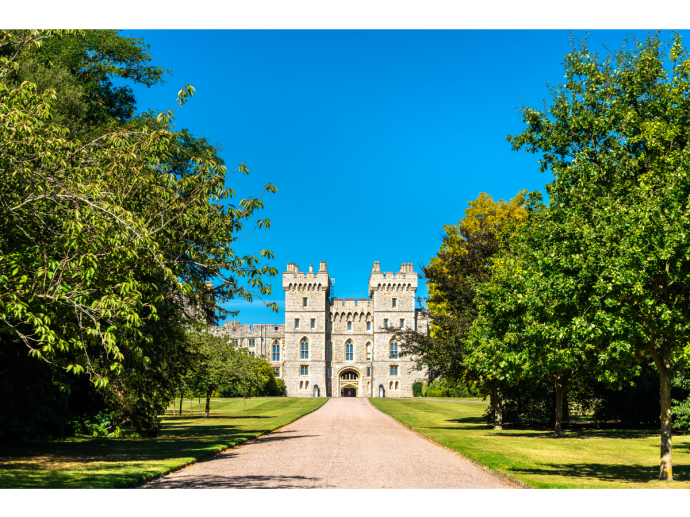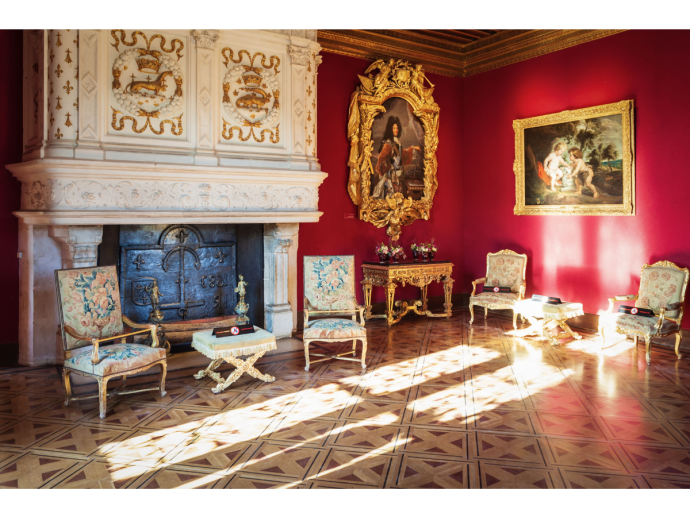Categories more
- Adventures (17)
- Arts / Collectables (15)
- Automotive (37)
- Aviation (11)
- Bath, Body, & Health (77)
- Children (6)
- Cigars / Spirits (32)
- Cuisine (16)
- Design/Architecture (22)
- Electronics (13)
- Entertainment (4)
- Event Planning (5)
- Fashion (46)
- Finance (9)
- Gifts / Misc (6)
- Home Decor (45)
- Jewelry (41)
- Pets (3)
- Philanthropy (1)
- Real Estate (16)
- Services (23)
- Sports / Golf (14)
- Vacation / Travel (60)
- Watches / Pens (15)
- Wines / Vines (24)
- Yachting / Boating (17)
Inside the £30 Million Mansion Prince Andrew Refuses to Leave
Published
10/26/2025Hidden deep within Windsor Great Park lies one of Britain’s most private royal residences - the Royal Lodge, a 17th-century estate that has become the unlikely centre of a modern-day power struggle. Once a quiet family home, it now stands as a symbol of privilege, controversy, and enduring beauty.
A Mansion Wrapped in Secrecy
Just three miles south of Windsor Castle, the Royal Lodge sits behind tree-lined drives and security gates that few outsiders ever pass. The residence boasts 30 rooms, including seven bedrooms, a grand saloon, and a vast drawing room with arched windows opening onto manicured lawns. The Crown Estate granted Prince Andrew a 75-year lease in 2003 after he funded millions in renovations, transforming the previously worn property into a royal showpiece.
From the outside, it resembles something between a country retreat and a palace. The sweeping gravel approach opens onto symmetrical Georgian façades, ivy-draped walls, and pristine gardens stretching across 98 acres of Berkshire parkland. House & Garden once described it as “a home built for retreat, not ceremony” - a place where the private life of a public family quietly unfolded.
Opulence in the Details
Step through its doors and the atmosphere changes. The interior, glimpsed through rare editorial photographs and archival imagery from The Independent and The Guardian, reveals rooms layered with heritage: chandeliers suspended from high corniced ceilings, walls lined with gilded frames and family portraits, Persian rugs underfoot, and heavy drapes framing sunlit windows.
The drawing room - the heart of the home - stretches nearly fifty feet long, anchored by a marble fireplace and a Steinway piano that once hosted charity recitals. Floral arrangements spill over ormolu tables, echoing the late Queen Mother’s fondness for English garden blooms. Each space tells its own story of comfort and excess: from the conservatory where Sarah Ferguson once hosted literary teas, to the crimson-walled dining room reserved for family dinners.
Life Beyond the Doors
The estate extends far beyond its main house. House & Garden notes a gardener’s cottage, a chapel lodge, six smaller guest cottages, and the once-famous children’s play area built for Princesses Beatrice and Eugenie. Tennis courts, a small driving range, and walking paths weave through the grounds. At dawn, Windsor’s deer occasionally graze along the perimeter hedges, a scene that evokes centuries of royal leisure.
Yet behind that serenity lies tension. The Duke’s refusal to vacate Royal Lodge despite public pressure has dominated headlines for months. His 75-year lease, which effectively shields him from eviction, has sparked debate about fairness and privilege within the modern monarchy. Critics argue that living rent-free in a multimillion-pound mansion during a cost-of-living crisis reflects an outdated system - one that feels at odds with today’s sense of accountability.
Behind the Velvet Curtains
Maintaining grandeur on this scale comes at a price. Newsweek reported that upkeep costs can exceed £400,000 a year, including roof repairs, ground staff, and security. With the Duke’s finances reportedly strained and a recent investment partnership collapsing, the Royal Lodge has become both sanctuary and burden - a reminder that luxury, even royal luxury, demands constant reinvestment.
The irony is unmistakable: the same lease that once secured his independence now ties him to obligations few could sustain. The property’s beauty is undeniable, but so are the questions it raises - about heritage, responsibility, and the public’s evolving expectations of those born into privilege.
A Study in Space and Psychology
Perhaps what fascinates people most is the contrast between public scrutiny and private peace. The design of the Royal Lodge, grand yet enclosed, ornate yet secluded, mirrors the psychological push and pull of royal life itself.
Environmental psychologists have long argued that architecture influences wellbeing. The soft symmetry of heritage homes, the natural light filtering through tall sash windows, even the placement of artwork can shape a resident’s mood. As explored in this feature from the CU Independent, small design choices can have a surprisingly profound effect on our state of mind. For Andrew, who lives largely out of the public eye, the Royal Lodge may serve as both refuge and reminder - comfort and confinement in equal measure.
The Monarchy’s Mirror
The wider royal family has sought to modernise under King Charles III, whose approach to “a slimmed-down monarchy” places emphasis on accountability and sustainability. The Royal Lodge dispute sits awkwardly within that vision. Supporters describe Andrew as honouring a legal lease; critics see a prince clinging to outdated privilege.
Whatever the outcome, the property itself stands unchanged - stately, sunlit, and quietly magnificent. It remains one of Britain’s most extraordinary private residences, both architecturally and symbolically.
The Luxury of Control
Royal Lodge embodies the eternal allure of exclusivity: beauty protected by boundaries, luxury defined by control. In that sense, it isn’t unlike the world of high-end digital spaces - where trust, transparency, and reputation separate prestige from risk. For example, curated platforms such as LuckyHat.com and its catalogue of regulated Bitcoin casinos highlight how integrity underpins value. Whether it’s a historic lease or a digital transaction, confidence depends on oversight - and the assurance that what glitters is genuine.
Both the Crown Estate and responsible gaming platforms operate on similar principles: structure, regulation, and the expectation of fairness. Without those, even the grandest foundations begin to crack.
A Final Glimpse
As the sun sets over Windsor Great Park, the Royal Lodge glows in golden light, its lawns immaculate, its windows quietly reflecting centuries of privilege and pressure. For some, it’s a relic of royal excess; for others, a living piece of history.
But beyond the controversy, the mansion itself endures as Britain’s enduring paradox: opulence surrounded by unrest, privacy built on public fascination. And for now, at least, its most reluctant tenant shows no sign of handing back the keys.
















